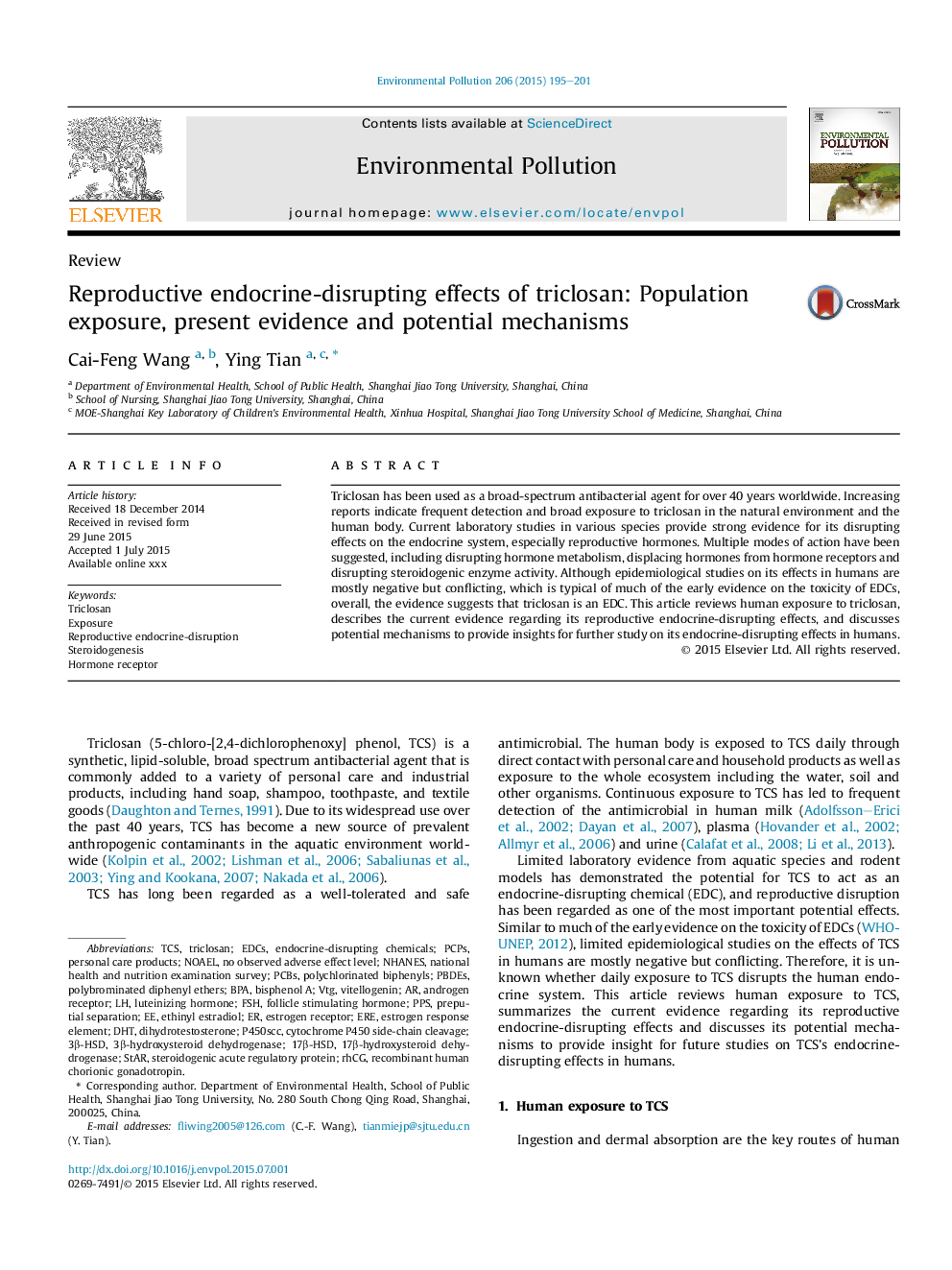| Article ID | Journal | Published Year | Pages | File Type |
|---|---|---|---|---|
| 6316768 | Environmental Pollution | 2015 | 7 Pages |
Abstract
Triclosan has been used as a broad-spectrum antibacterial agent for over 40 years worldwide. Increasing reports indicate frequent detection and broad exposure to triclosan in the natural environment and the human body. Current laboratory studies in various species provide strong evidence for its disrupting effects on the endocrine system, especially reproductive hormones. Multiple modes of action have been suggested, including disrupting hormone metabolism, displacing hormones from hormone receptors and disrupting steroidogenic enzyme activity. Although epidemiological studies on its effects in humans are mostly negative but conflicting, which is typical of much of the early evidence on the toxicity of EDCs, overall, the evidence suggests that triclosan is an EDC. This article reviews human exposure to triclosan, describes the current evidence regarding its reproductive endocrine-disrupting effects, and discusses potential mechanisms to provide insights for further study on its endocrine-disrupting effects in humans.
Keywords
BPA3β-HSD17β-HSDPCPsNHANESP450sccPBDEsEREVitellogeninNOAELPCBsPreputial separationTCS3β-Hydroxysteroid dehydrogenase17β-Hydroxysteroid dehydrogenaseDHTrhCGCytochrome p450 side-chain cleavageEDCsPpsEthinyl estradiolSteroidogenesisNational Health and Nutrition Examination SurveyBisphenol APolychlorinated biphenylsTriclosanExposureDihydrotestosteronePolybrominated diphenyl ethersStarestrogen response elementPersonal care productsEndocrine-disrupting chemicalsfollicle stimulating hormoneluteinizing hormoneFSHNo observed adverse effect levelvtgSteroidogenic acute regulatory proteinAndrogen ReceptorEstrogen receptorhormone receptor
Related Topics
Life Sciences
Environmental Science
Environmental Chemistry
Authors
Cai-Feng Wang, Ying Tian,
